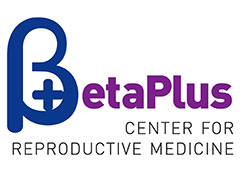The only time a woman can conceive is during ovulation. Some women ovulate rarely or even never, thus reducing their chances of having a child. The most common example of non-ovulating women are women with polycystic ovarian syndrome (PCOS).
In 2002 Imani showed chances of pregnancy in a large sample of women with PCOS. Basic yet very important characteristics of such patients are free androgen index (FAI), body mass index (BMI) and woman’s age. The first nomogram features chances of ovulation, whereas the second features chances of live births.
The first nomogram shows that the higher FAI and the less frequent menstrual periods mean the lower chances of ovulation. The second nomogram links the same chances of ovulation with a live birth, which is very low if periods and ovulation are rare.
According to World Health Organization (WHO) there are three types of anovulation:
- WHO type I – hypogonadotropic hypogonadism
- WHO type II – normogonadotropic anovulation
- WHO type III – hypergonadotropic hypogonadism
In cases of hypogonadotropic hypogonadism (type I), mostly resulting from excessive stress, exercising or significant weight loss, usually ovulation induction is required after eliminating problems leading to anovulation.
Hypergonadotropic hypogonadism (type III) is a result of early depletion of ovarian reserve. These patients rarely react to usual treatments and usually egg donation is the only option.
There is a group of patients with anovulation problems caused by hyperprolactinemia (HP – elevated prolactin in blood) which is successfully treated. Anovulation caused by thyroid disorders is treated by re-establishing normal thyroid function, which then re-establishes ovulation.
Ovulation induction in women with anovulation due to hypothalamus and pituitary conditions (WHO type II, mostly PCOS – polycystic ovarian syndrome) is particularly difficult. It is potentially dangerous due to a multiple-follicle development and ovarian hyperstimulation syndrome (OHSS), along with potential multiple pregnancies which carries numerous risks for children. At the same time a woman will fail to react to the treatment. According to the European Society of Human Reproduction and Embryology (ESHRE), the aim of ovulation induction in women with PCOS is a monofollicular ovulation (development of a single follicle) with maximal reduction of OHSS and multiple pregnancies risks.




